The historic pottery of humanity has been profoundly impacted by ancient pottery cultures, which provide a fascinating glimpse into our ancestors’ traditions and ways of life. We will travel through time and space as we explore this crash course on ancient pottery cultures, learning the mysteries of these commonplace vessels and their artists.
Through their artistic creations in clay, every culture has left its mark on the world, from the clarified patterns of Minoan pottery to the symbolic motifs of Native American ceramics.
Embark on a journey through time with our A crash course on ancient pottery cultures. Explore the innovative techniques and rich legacy of pottery civilizations.
Pottery Cultures From The Americas
Mayan Pottery
Mayan pottery represents a remarkable fusion of art, spirituality, and functionality. Each vessel tells a story of ancient traditions and rich cultural heritage. The intricate designs and vibrant colors found in Mayan pottery reflect the sophisticated craftsmanship and technical expertise of the culture.
Mayan pottery stands as a testament to the incredible artistic and technical skills of this ancient civilization. From the intricate designs of their pottery vessels to the vibrant colors used in their decorations, Mayan pottery reflects the rich cultural heritage of this fascinating Mesoamerican society.
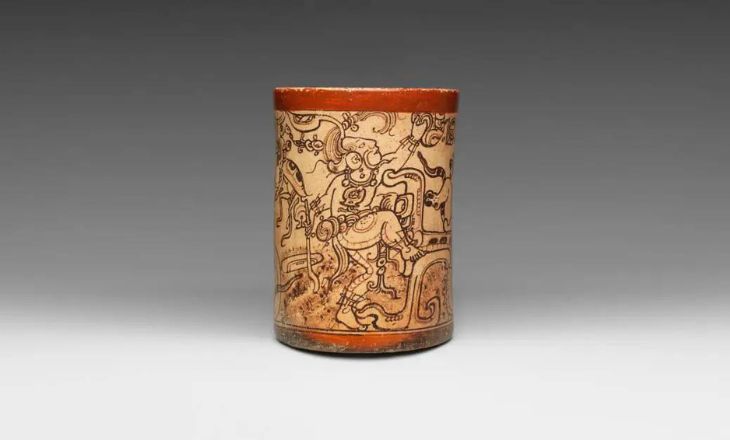
Each piece tells a story, depicting scenes from everyday life, religious rituals, and mythological characters, providing modern scholars with valuable insights into Mayan beliefs and traditions.
Pottery was not merely functional but also carried spiritual meaning, reflecting the interconnectedness of art and ritual in Mayan culture.
The advanced techniques employed by Mayan potters highlight their mastery of form and function, influencing countless generations of artists who continue to be inspired by their enduring legacy today.
Read our article “A Guide to Ancient Mayaan Pottery” for more on this fascinating ancient culture.
Navajo Pottery| A Crash Course On Ancient Pottery Cultures
Navajo pottery is a reflection of the rich cultural traditions and artistic heritage of the Navajo people. With its distinctive earthy colors, intricate designs, and symbolic motifs, Navajo pottery serves as a tangible expression of the tribe’s connection to the land and their spiritual beliefs.
Creating Navajo pottery involves a deep reverence for nature, with many artists incorporating traditional materials like clay, minerals, and natural pigments gathered from sacred sites into their work. Each piece tells a story, preserving the wisdom and traditions passed down through generations.
One fascinating aspect of Navajo pottery is its role in bridging past and present. While rooted in ancient techniques and styles that have been passed down through generations—an art form deeply rooted in tradition—modern-day Navajo potters are also infusing contemporary elements into their craft.
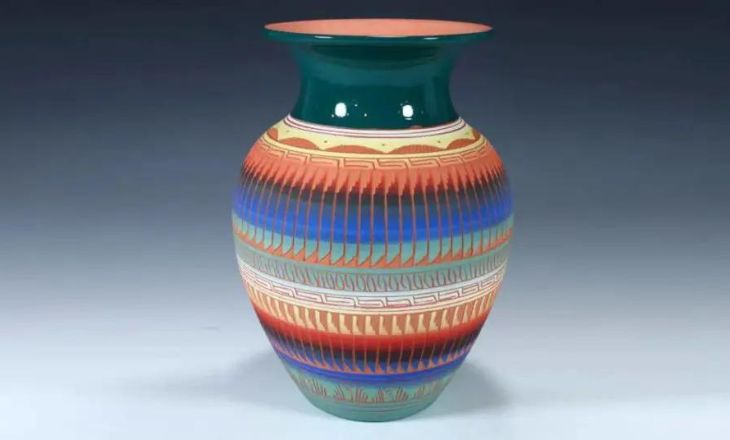
Check out “9 Navajo pottery designs you’ll want to check out” at the link to see some incredible styles from the Navajo people.
This fusion creates a powerful dialogue between historical pottery and innovation, breathing new life into an age-old tradition while honoring its legacy. As a result, today’s Navajo pottery reflects both enduring cultural values and dynamic creativity—an art form that continues to evolve alongside the vibrant spirit of the Navajo people.
Pueblo Pottery
The Pueblo pottery tradition continues to evolve as new generations infuse their own experiences and interpretations into this ancient pottery. For their masterful ceramics, they are well-known in the art world.
By recognizing its historical importance while celebrating modern expressions within this medium, we can gain a deeper appreciation for the relevance and resilience of Pueblo pottery in today’s global landscape.
Check out our article “A Guide to Ancestral Pottery” for more on this culture and their pottery.
Aztec Pottery
In central Mexico, the Aztec civilization flourished from the 14th to the 16th century, and its rich artistic and cultural legacy is reflected in the pottery produced during that time. Aztec pottery is known for its elaborate patterns, vivid hues, and symbolic themes, which showcase the artistry and talent of these ancient pottery design creators.
One particular technique used by Aztec potters was the coiling method, where long ropes of clay were coiled and smoothed together to form vessels, creating unique patterns and textures.
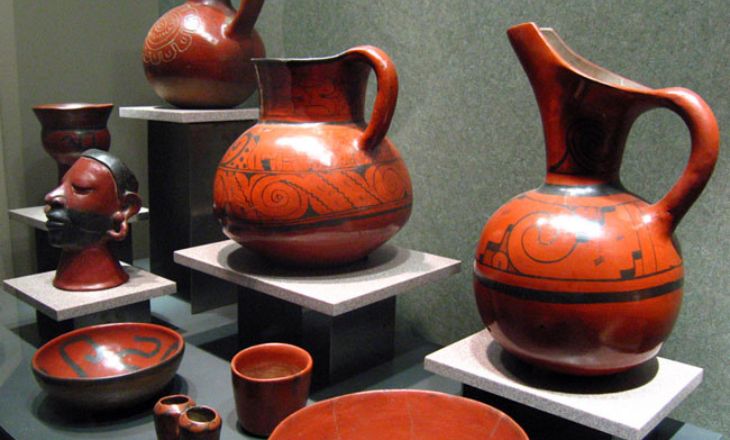
The intricate designs and vibrant colors of Aztec pottery reflect the artistic prowess and spiritual significance of these ancient people. Each piece tells a story, serving as a glimpse into the daily lives, rituals, and beliefs of the Aztec society.
People all over the world, from art enthusiasts to scholars, are in awe of their ability to capture both functional excellence and symbolic depth.
Check out our article “A Guide to Ancient Aztec pottery” to learn more.
MEDITERRANEAN POTTERY CULTURES
Greek Pottery
The rich diversity of Greek pottery styles reflects the values, beliefs, and everyday life of the people who created them. From the iconic black-figure and red-figure techniques to the intricate geometric designs, Greek pottery is a treasure trove of historical Ceramics.
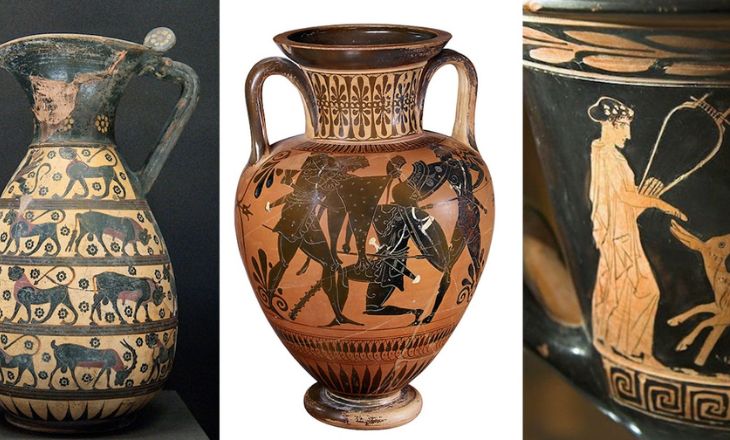
Greek pottery reveals insights into the religious rites, mythological stories, and social mores of the ancient Greek culture through its individual storytelling qualities. Many vessels portray the symposium scene, which emphasizes the Greeks’ love of wine and celebration in addition to highlighting the significance of group feasting.
Greek pottery encapsulates the mastery of craftsmanship alongside profound storytelling capabilities. Its influence continues to reverberate through art appreciation today, serving as a testament to the enduring legacy of Mediterranean pottery cultures.
Egyptian Pottery
The ancient Egyptians were renowned for their skill in crafting exquisite pottery, creating vessels and containers for everyday use as well as elaborate ceremonial items. One of the most distinctive features of Egyptian pottery is its use of intricate decorative motifs, often featuring symbols and imagery from Egyptian mythology and daily life.
Egyptian pottery not only served practical purposes but also held deeper symbolic meaning within their society. The use of specific shapes and designs reflected religious beliefs, and social status, and even provided insight into trade networks and cultural exchanges across the Mediterranean region.
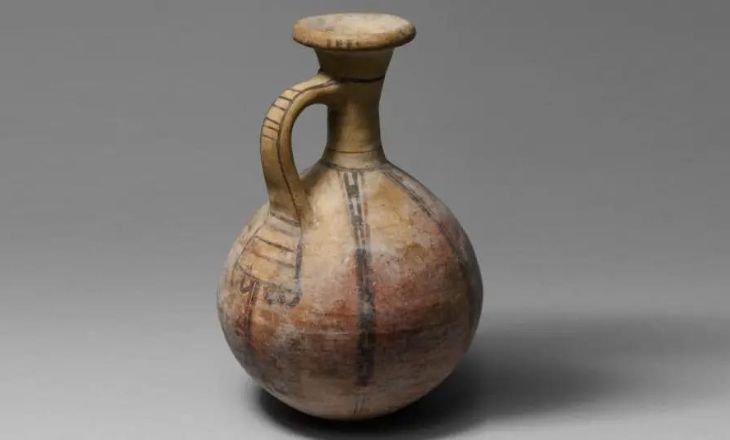
The study of Egyptian pottery provides a fascinating glimpse into the ancient Mediterranean pottery cultures. The ancient Egyptians were known for their remarkable craftsmanship and innovative use of pottery, creating vessels that were not only functional but also works of art.
One unique aspect of Egyptian pottery is its association with burial practices. the varying styles and techniques employed in different regions of Egypt highlight the diverse influences and preferences within this storied civilization’s pottery traditions.
EASTERN POTTERY CULTURES
Japanese Pottery
Japanese pottery is deeply rooted in tradition, with each region boasting its own distinct style and techniques. Japanese pottery reflects the unique blend of aesthetic sensibility and technical expertise.
the concept of wabi-sabi permeates Japanese pottery, emphasizing the beauty found in imperfection and impermanence. This philosophy has shaped Japanese ceramics into timeless treasures that evoke a sense of tranquility and harmony.
One cannot discuss Japanese pottery without mentioning the revered art form of Raku ware. Its origins lie in 16th-century Kyoto when it was favored by tea masters for its rustic charm and unpredictable glaze effects.
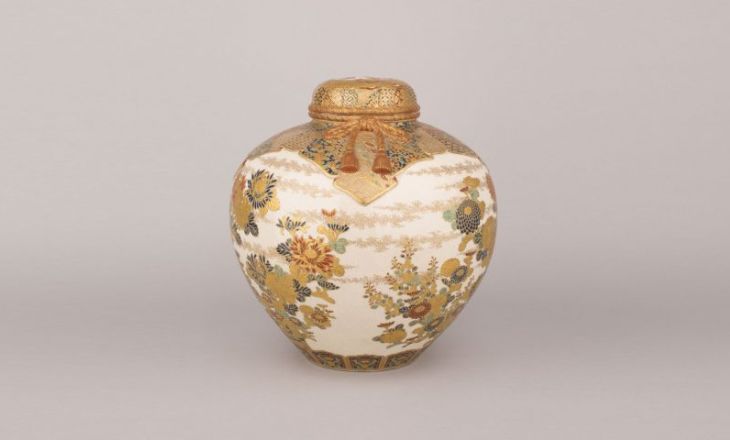
Today, Raku continues to captivate enthusiasts with its spontaneous firing process, resulting in one-of-a-kind pieces that embody spontaneity and elegance. As technology advances, contemporary artists are also pushing boundaries by combining traditional techniques with innovative designs, paving the way for a dynamic future for Japanese pottery. Embracing both tradition and innovation, Japanese pottery continues to enchant connoisseurs globally while maintaining its deep ties to cultural heritage.
WHAT IS THE OLDEST FORM OF POTTERY?
The oldest form of pottery dates back to around 18,000 years ago during the Late Glacial period. Archaeologists have unearthed evidence of early pottery in East Asia, specifically in present-day China and Japan.
These ancient ceramics were initially crafted by hand using coils or slabs of clay and fired at relatively low temperatures in wood-burning kilns. What makes this early pottery so fascinating is not only its age but also the intricate designs and skillful craftsmanship displayed by these ancient potters.
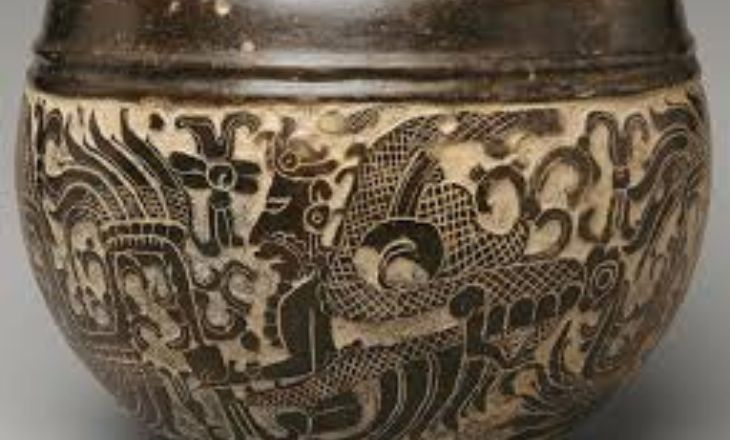
One particular distinguishing feature of this ancient pottery is the unique surface decorations that showcase elaborate patterns and symbols, which provide valuable insights into the cultural and artistic practices of the time.
the discovery of these artifacts sheds light on early human settlement patterns and social organization, as well as technological advancements during this prehistoric era.
WHAT WAS POTTERY USED FOR IN ANCIENT TIMES?
Pottery in ancient times served a multitude of purposes beyond its aesthetic appeal. The Clay’s strength and adaptability made it the perfect material for making useful items like drinking utensils, storage containers, and cooking vessels.
Because of its resistance to high temperatures, it was also useful for building ovens and kilns, which are necessary for preparing and preserving food.
pottery was used in religious practices and burial rituals across various cultures. Intricately decorated pottery was often employed as offerings to deities or placed within tombs to accompany the deceased into the afterlife.
These artifacts not only reflected the beliefs and customs of ancient societies but also provided archaeological insights into their spiritual practices.
pottery’s multifaceted uses in ancient times highlight its significance not only as a utilitarian item but also as a symbol of cultural identity and spiritual beliefs that continue to intrigue historians and archaeologists today.
WHAT POTTERY TOOLS DID THE ANCIENT POTTER USE?
Ancient potters were skilled craftsmen who used a variety of tools to create their intricate pottery masterpieces. Some of the most commonly used tools included wooden paddles, metal scrapers, and carving tools made from bone or other natural materials.
These tools were essential for shaping the clay, smoothing its surface, and adding decorative details.
One unique tool used by ancient potters was the potter’s wheel, which revolutionized the art of pottery making. This device allowed potters to create more symmetrical and uniform pieces with greater efficiency
ancient potters also utilized specialized brushes made from natural fibers to apply glazes and decorative designs to their ceramics. By appreciating these age-old techniques, we can gain a deeper appreciation for the artistry and skill that went into creating some of history’s most enduring works of ceramic art.
ANCIENT POTTERY DESIGNS
Ancient pottery designs offer a fascinating glimpse into the artistic and cultural expressions of past civilizations. From the intricate geometric patterns of Minoan pottery to the ornate animal motifs of Etruscan ceramics, these designs are a testament to the creativity and craftsmanship of ancient artists.
By studying these ancient designs, we can gain a deeper understanding of how these cultures viewed themselves about the natural world around them.
These cross-cultural influences enrich our appreciation for ancient pottery as not just artifacts but as living testaments to human interaction and creativity throughout history.
Kintsugi
Kintsugi, the Japanese art of repairing broken pottery with gold, has a deep philosophical significance. Instead of hiding or discarding the broken pieces, Kintsugi embraces and highlights the cracks as part of an object’s history.
This approach to pottery design is a powerful metaphor for embracing imperfection and finding beauty in the flawed.
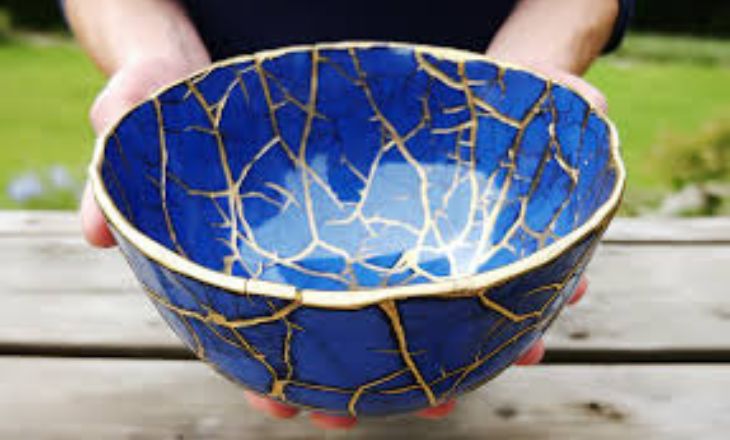
Ancient pottery designs like Kintsugi remind us that impermanence is a fundamental aspect of existence. The use of gold in Kintsugi represents not only beauty but also resilience and strength in adversity.
It challenges our modern obsession with perfection and invites us to appreciate the unique character that comes with wear and tear on objects. Just as Kintsugi celebrates the story behind each piece, it encourages us to honor our scars and experiences as valuable parts of our narrative.
Black-Figure Pottery
Ancient pottery designs are a fascinating window into the artistic and cultural expressions of ancient civilizations. Characterized by its striking black figures against a terra cotta background, this pottery style quickly gained popularity for its unique visual appeal and detailed narrative scenes.
One of the most intriguing aspects of Black Figure Pottery is the way it reflects the values and beliefs of ancient Greek society. the use of black figures against a reddish background creates a sense of drama and depth, adding to the compelling nature of these pottery designs.
As we admire the rich tapestry of Black Figure pottery designs, we are transported back in time to an era where craftsmanship and storytelling converged to create enduring works of art.
Red Figure Pottery
Ancient Greek red-figure pottery is an art form that dates back to the 6th century BC, yet its vibrant designs continue to captivate contemporary audiences. One of the most distinctive features of red-figure pottery is the striking contrast between the reddish-orange background and the black figures depicted on it. This artistic technique allowed for a level of precision and detail not achievable in earlier black-figure pottery, showcasing the skill and innovation of Ancient Greek artisans.
In this way, red-figure pottery serves as both an artistic expression and a historical artifact, allowing us to not only appreciate the craftsmanship but also gain insights into ancient culture and traditions.
The mastery displayed in these designs reflects the artisan’s deep understanding of anatomy and perspective rendering each motif with exquisite attention to detail. This timeless art form continues to inspire contemporary artists while preserving ancient narratives for generations to come.
Sgraffito
Ancient pottery designs are steeped in tradition and artistry, with each culture leaving a unique mark on the history of ceramics. sgraffito, a method of decorating pottery by scratching through a layer of slip or glaze to reveal the contrasting color beneath.
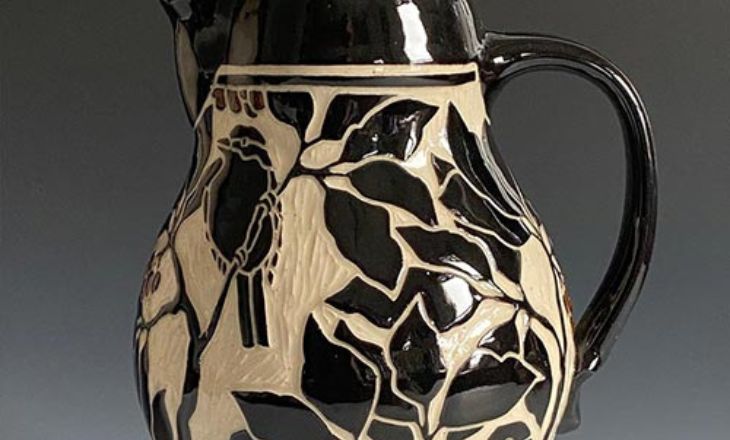
This intricate method has been utilized by civilizations like the Etruscans, Greeks, and Native Americans to create stunningly detailed and sophisticated pottery designs that continue to inspire modern artisans today.
This technique was prevalent in ancient cultures such as the Greeks, Etruscans, and Moors, showcasing the timeless appeal of sgraffito designs.
Egyptian Faience
Egyptian Faience is a captivating form of ancient pottery that dates back to around 3000 BCE. This remarkable material, often mistaken for glass due to its lustrous appearance, was widely used by the ancient Egyptians to create intricate and colorful pottery designs.
One fascinating aspect of Egyptian Faience pottery designs is the use of symbolic motifs such as lotus flowers, sacred animals, and hieroglyphic inscriptions. These symbols held deep cultural and religious significance for the ancient Egyptians, serving as expressions of their beliefs and values.
Conclusion
The study of ancient pottery cultures provides a fascinating glimpse into the artistic, technological, and social advancements of early civilizations. By examining these ancient artifacts, we gain valuable insights into the daily lives, beliefs, and traditions of societies long gone.
As we continue to uncover and analyze new archaeological finds, it is important to preserve and protect these fragile remnants of our collective human heritage. Let us remember to appreciate and learn from the pottery cultures of the past as we seek to understand our place in history.
